Analysis
See the Highlights of ARCO Lisboa’s Debut Edition
The carefully curated boutique fair opened amid a buoyant mood.
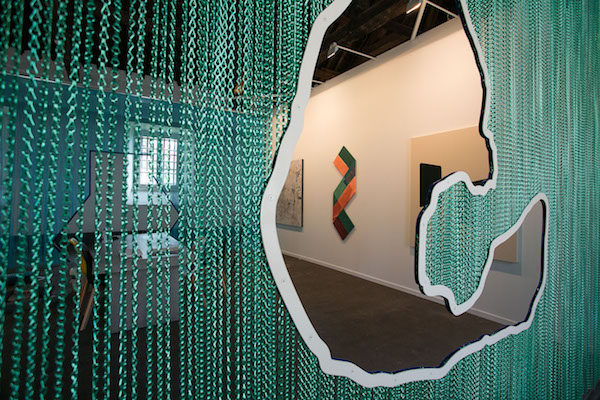
The carefully curated boutique fair opened amid a buoyant mood.

Lorena Muñoz-Alonso

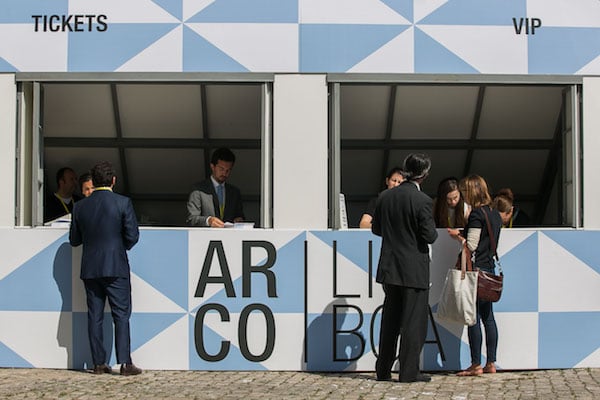
Entrance to ARCO Lisboa 2016 at Fábrica Nacional da Cordoaria. Photo: Rodrigo Gatinho, Courtesy ARCO Lisboa.
Driving through Lisbon, one can see the cityscape of the Portuguese capital transforming: hosts of cranes tower over the city’s picturesque tiled buildings, as new developments are being rapidly erected next to beautiful old houses with ghostly shuttered windows.
After a long and deep economical crisis that apexed between the years 2010 and 2014, the economy of the country, and of its capital in particular, seems to be waking up from a long and unwanted slumber. The energy in the real estate sector seems to echo a broader need to grow, to expand, to make up for lost time.
The first edition of ARCO Lisboa, the Portuguese outpost of Madrid’s long-established art fair, seems yet another manifestation of this growth.
Despite being a Spanish import, the fair has been welcomed with open arms by the Portuguese dealers, and yesterday evening, during the press and VIP preview, the mood was optimistic (yet a little cautious).
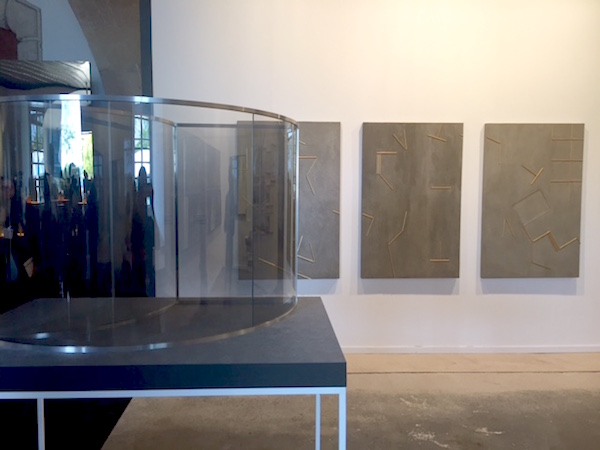
Works by Dan Graham and Pedro Barateiro at Galería Filomena Soares at ARCO Lisbon. Photo: Lorena Muñoz-Alonso.
“We’ve only just started, but we really are hoping that the fair will be successful, the scene needs it, and it would be a great boost for Portuguese artists,” a sales representative of the Lisbon-based Galería Filomena Soares told artnet News, when asked about early sales.
The gallery, one of the strongest in the country, had a massive booth just by the entrance, signalling its prominence in the Portuguese ecosystem. In it, works by international artists like Dan Graham (of whom a 2011 sculpture called Model is on sale for €70,000) shared the space with others by young Portuguese artists like Pedro Barateiro, whose triptych Invitation to Dance (2016), made of concrete slabs with embedded golden pencils is on sale for €20,000.
“The fair looks beautiful, there are many strong presentations, and we were really keen on galleries featuring few but strong works, focusing on one highlighted artist,” Maribel López, vice director of ARCO Madrid and ARCO Lisbon, told artnet News.
The fair does look good, and its venue, the historical Fábrica Nacional da Cordoaria, is a welcome departure from the usual modern and bland convention buildings where fairs usually take place.
Here, original wooden beams and shabby concrete floors offer a more texturized and interesting look, which flatters the minimal and conceptual oriented booths of many galleries, an aesthetic favored by many Brazilian and Portuguese artists alike, and which reigned supreme throughout the fair.
The layout is also interesting, with all the booths arranged in one long row, something that only obviously suits a boutique fair such as this one, gathering just 45 galleries from 8 countries.
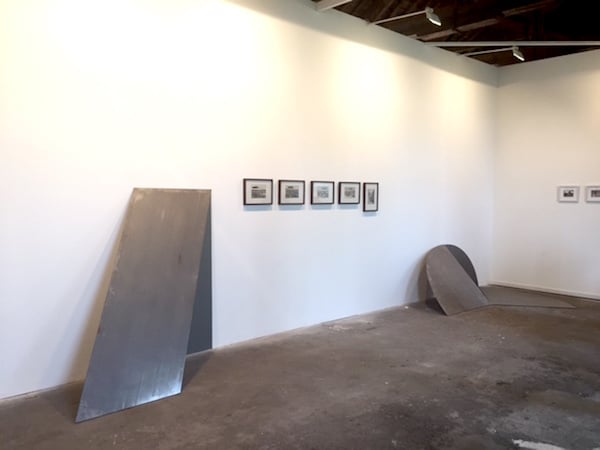
Works by John Castles and Jaime Tarazona at Nueveochenta gallery at ARCO Lisbon. Photo: Lorena Muñoz-Alonso.
Nueveochenta gallery from Bogotá, was the only Colombian gallery participating at the fair, and offered a stunning two-artist presentation by national artists, the younger Jaime Tarazona and Colombian modernist legend John Castles.
Castles’s fantastic steel and iron sculptures, which link the wall and the floor through pictorial trompe l’oeil, represented Colombia in the 1981 São Paulo Biennial and the 1986 Havana Biennial, and his two sculptures available at the fair are priced at $28,000 and $35,000.
“Despite the number of art fairs already happening in Latin America, we decided to participate in ARCO Lisbon because the selection of galleries is excellent, and also because Lisbon is a fantastic meeting point between Europe and Latin America,” Nueveochenta’s Daniela Cortés told artnet News.
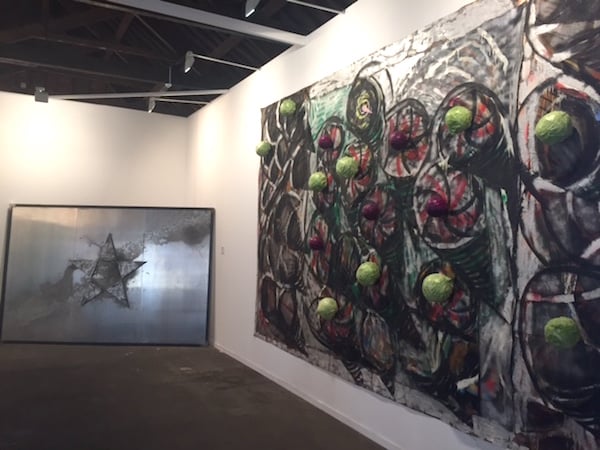
Works by Mario Merz and Gilberto Zorio at Giorgio Persano gallery at ARCO Lisbon. Photo: Lorena Muñoz-Alonso.
Nearby, at Turin’s Giorgio Persano—an ARCO Madrid regular and member of the gallery committee of the Lisbon branch—its selection of Italian Arte Povera and Portuguese heavy-hitters, including Mario Merz, Michelangelo Pistoletto, Nunzio, Julião Sarmento, and Pedro Cabrita Reis, made it clear that ARCO Lisbon is not just playing the lower-to-mid price range game.
Merz’s 1985 mixed media on canvas Vento preistorico dalle montagne gelate had a price tag of €700,000, while Pistoletto’s recent work La Porta (2015) was on sale for €350,000.

Booth of Múrias Centeno at ARCO Lisbon. Photo: Rodrigo Gatinho, Courtesy ARCO Lisboa.
Nicely enclosed by two eye-catching green curtains by Daniel Steegmann Mangrane (at $30,000 a pop), the booth of Múrias Centeno, a fantastic young Portuguese gallery with spaces both in Lisbon and Porto, was packed with VIPs from the get go.
Showcasing also recent works by Dan Rees, Mauro Cerqueira, Florian Meisenberg, and Secundino Hernández (whose recent medium-sized canvas in stark colors had sold for €26,000 shortly after the doors opened), the booth had a perfect combination of painting and sculpture, and of local talent and young international stars.
“We are really excited about this fair,” co-director and co-founder Nuno Centeno told artnet News. “In the last two, three years, Portugal is going through a great transformation, it’s become a ‘cool’ destination and I think a good art fair can help solidify this. There’s is a lot of foreign money coming to the city; French, British, Belgian people that are coming here to invest in real estate and art. They are ‘buyers,’ but we would like to turn them into proper ‘collectors,’ refine their knowledge and taste,” he explained.
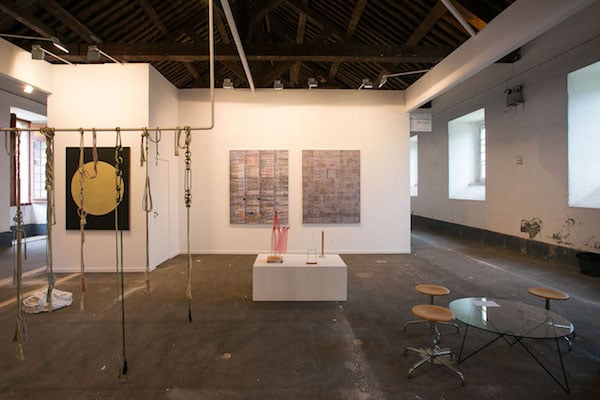
Booth of MaisterraValbuena at ARCO Lisbon. Photo: Rodrigo Gatinho, Courtesy ARCO Lisboa.
Nearby, the booth of Madrid-based gallery MaisterraValbuena—featuring works by Maria Loboda, B. Wurtz, Antonio Ballester Moreno, A-Kassen, and Néstor Sanmiguel Diest—was packed, as was the booth of fellow Madrid gallery Parra Romero, that had presented a staggering booth featuring works by gallery artists including Robert Barry, Luis Camnitzer, Rosa Barba, Philippe Decrauzat, and Florian Pumhösl. A canvas work by Stefan Bruggeman, part of a series of works at £65,000 a pop, had sold within the first hour of the fair.
Other stand-out booths included the presentation of Túlio Pinto’s work (with a price range of €12,000-18,000) at São Paulo-based Baró Galeria. Inspired by legendary American artists Richard Serra and Carl Andre, Pinto’s delicate and stark take on minimal sculpture was a revelation.
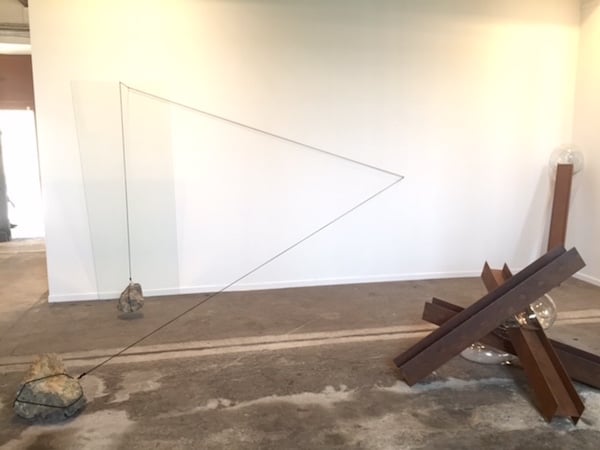
Works by Túlio Pinto at Baró Galeria at ARCO Lisbon. Photo: Lorena Muñoz-Alonso.
Meanwhile, at Galeria Graça Brandão, the solo presentation of João Maria Gusmão + Pedro Paiva was receiving much attention, featuring recent sculptures and photographs by the Portuguese duo with prices ranging from €11,500-28,500. Gusmão and Paiva’s humorous explorations of philosophical theories have garnered a cult following on an international level, and turned the Lisbon-based artists into staples on the local scene.
As I walked toward the gates of the Cordoaria at 10pm, the preview party showed no signs of slowing down, with people still crowding aisles, booths in full swing, and guests spilling toward the open patio to refill their drinks. The mood was buoyant, and visitors and exhibitors seemed equally keen on making this fair work.
The Portuguese economy might be still recovering on a local level, but thanks to a tax incentive for foreign buyers—who thus avoid a 23 percent tax on purchases made in the country—ARCO Lisbon might certainly be an attractive proposition for many European collectors, and those from across the pond who want to enjoy a small and relaxed, yet carefully curated fair.
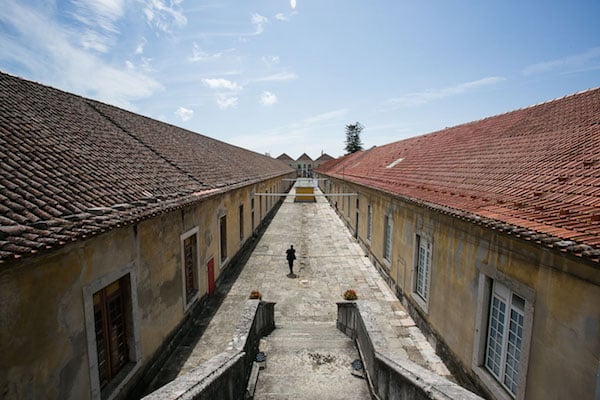
Fábrica Nacional da Cordoaria, where ARCO Lisboa takes place. Photo: Rodrigo Gatinho, Courtesy ARCO Lisboa.
The inaugural edition of ARCO Lisboa is taking place at the Fábrica Nacional da Cordoaria, Lisbon, from May 26-29, 2016.